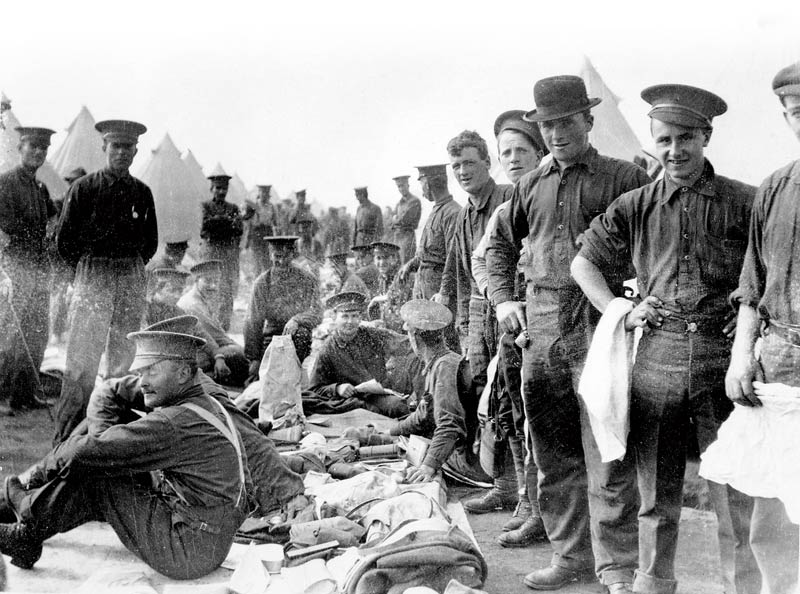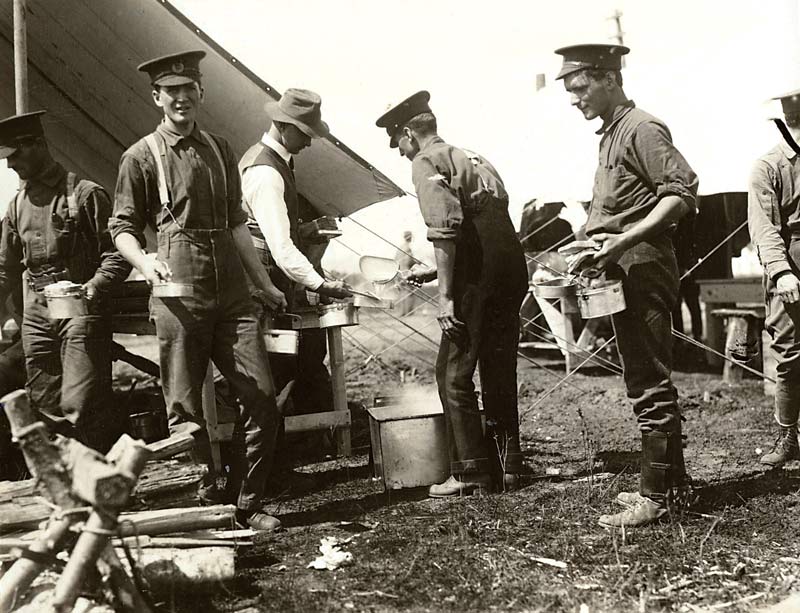As soon as war was declared in 1914, thousands of volunteers descended on a tent city for some very basic training
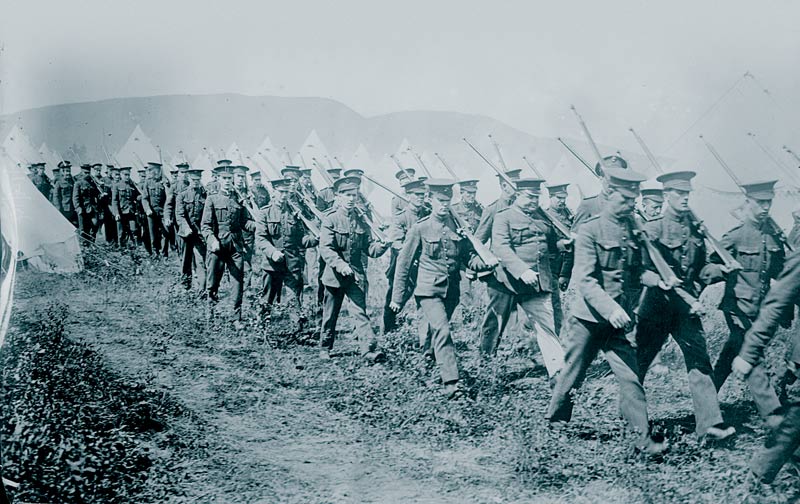
Tidy new recruits march to target practice at Valcartier. [Bain News Service/U.S. Library of Congress/2014697490]
Britain declared war on the Kaiser’s Germany on Aug. 4, 1914, and Canada immediately began readying for the inevitable.
Westminster had asked for 25,000 troops in the first contingent. Canada gave 30,617, rallied to the cause by the minister of militia and defence, Sam Hughes. Outside of Quebec, it didn’t take much persuasion.
Canada was still a young dominion at the time. Ties to the “mother country” ran deep. Almost half the Canadians who served had been born in Britain. Many had a romanticized idea of war. They flooded recruiting stations and church and community halls in towns and cities across the country.
Many belonged to local militias. Some had fought in the South African War. Most were farmers, fishermen, lumbermen and city folk.
The newly designated Valcartier camp north of Quebec City filled up quickly. There was no time to build barracks. By the end of August, a sprawling tent city was expanding. To accommodate what would grow to more than 35,000 recruits, the government expropriated 8,600 acres of land to enlarge an existing 5,000-acre property.
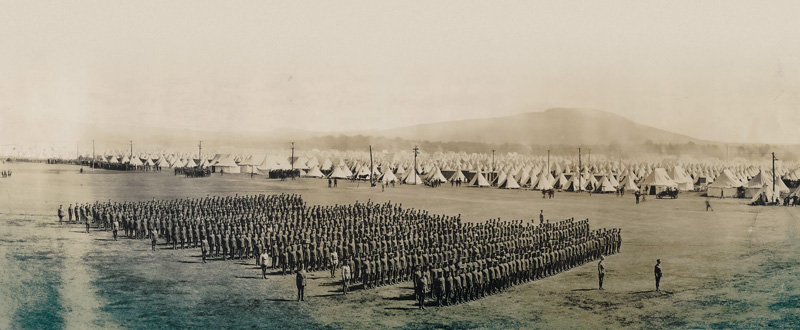
The 1st Canadian Infantry Battalion assembles at the training camp in Valcartier, Que., before shipping out in 1914. [George Metcalf Archival Collection/CWM/19740416-003]
Six weeks after they were called to arms, the first contingent set sail aboard 30 ships anchored off Gaspé, Que. Before they departed, Hughes provided them with copies of a 900-word message, entitled “Where Duty Leads.”
“No more typical army of free men ever marched to meet an enemy,” Hughes told them. “Some may not return—and pray God they be few—for such, not only will their memory be cherished by loved ones near and dear, and by a grateful country…but the soldier going down in the cause of freedom never dies—immortality is his.”
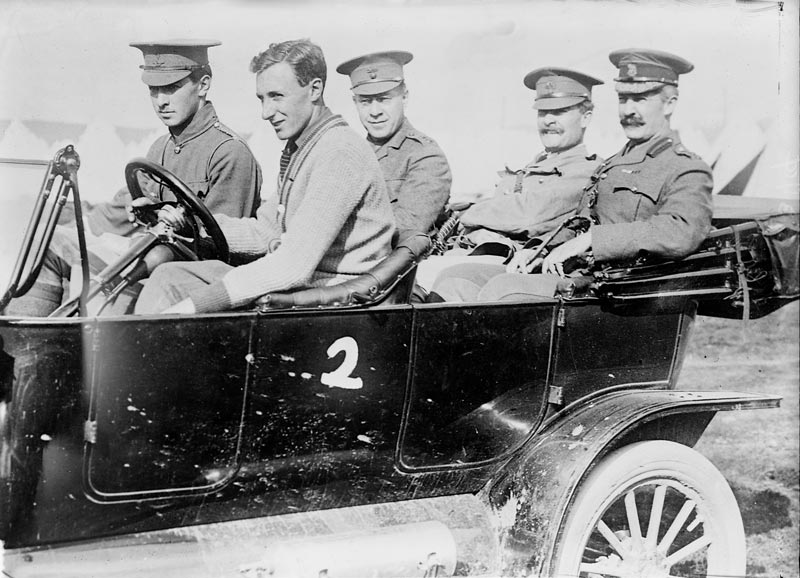
The camp commander, Colonel Victor Williams (rear seat, middle) conducts an inspection. [2014697178]
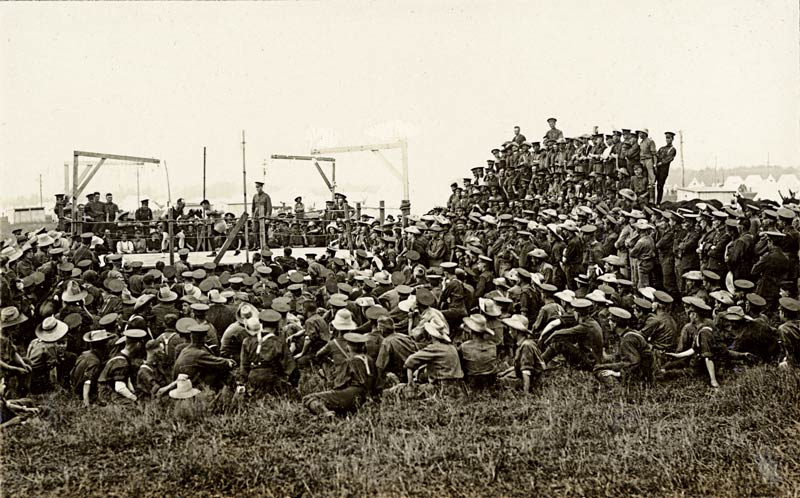
The first contingent of the Canadian Expeditionary Force gathers round for a boxing match shortly before sailing for Britain in 1914. [J.A. Millar/Montreal Daily Star/University of Victoria Librairies]
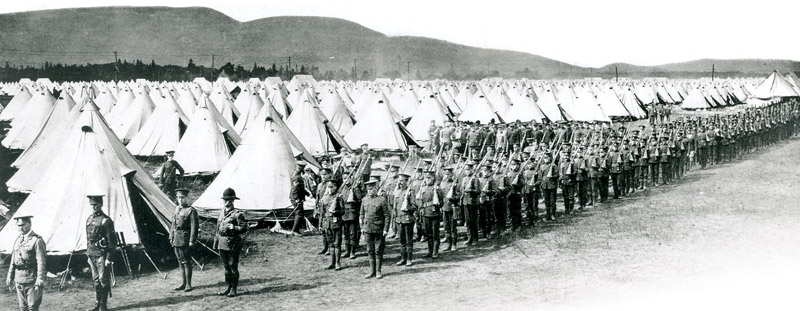
Troops assemble alongside the tent city at Valcartier shortly before the first contingent of them sail for Britain on Oct. 3, 1914. [LAC/3642184]
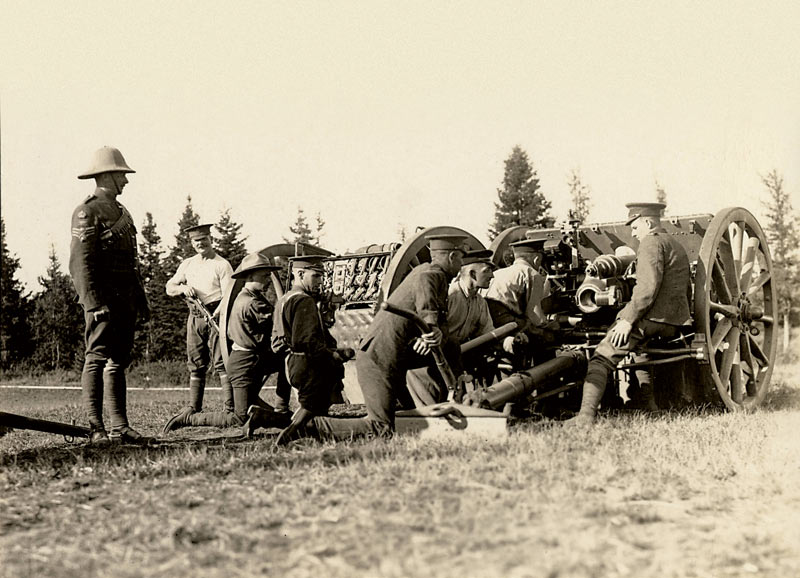
A detachment of ‘B’ Battery, Royal Canadian Horse Artillery, conducts gunnery drills under watchful eyes. [J.A. Millar/Montreal Daily Star/University of Victoria Librairies/Wikimedia]
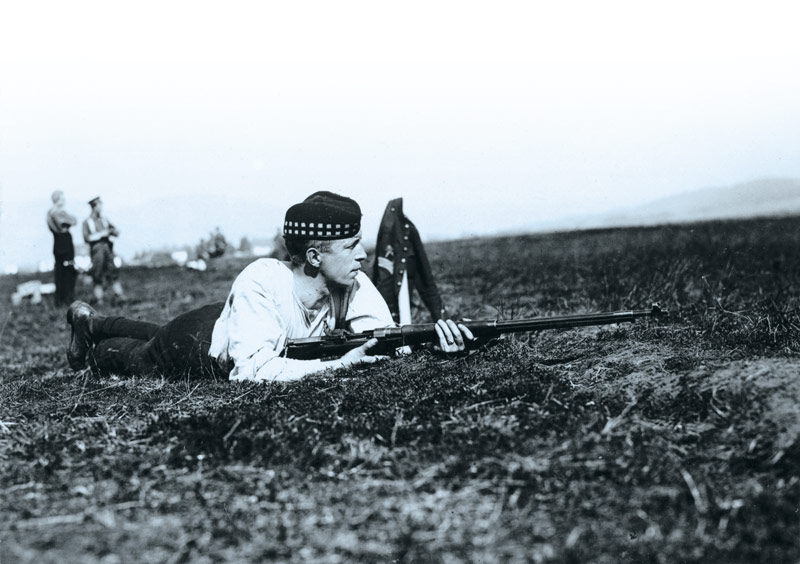
Identified only as Sergeant Hawkins, a Canadian Highlander, Ross Mk III rifle in hand, looks downrange. [J.A. Millar/Montreal Daily Star/University of Victoria Librairies/Wikimedia]
Advertisement








